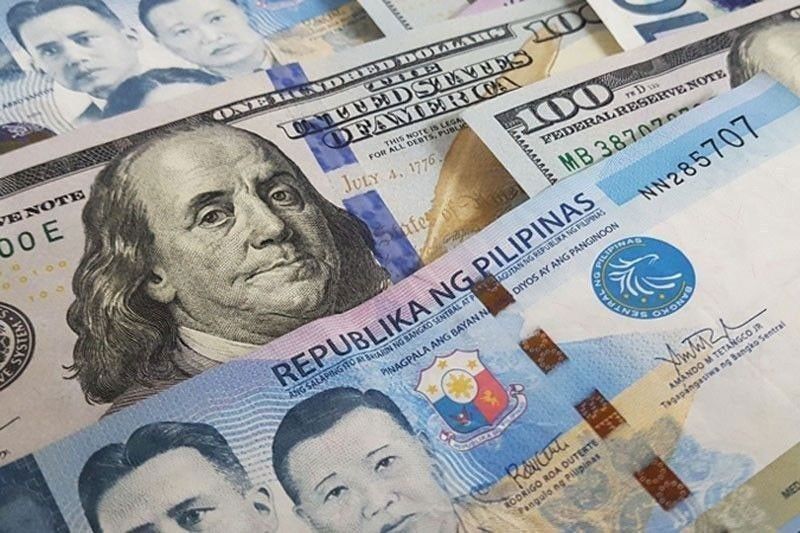Peso seen hovering around 59:$1 in 2025

MANILA, Philippines — The peso is expected to weaken further in 2025, with analysts predicting the exchange rate to hover around 59 per dollar by midyear.
This outlook is driven by a mix of global uncertainties, including US economic policy under the anticipated Trump administration and persistent geopolitical tensions.
Reinielle Matt Erece, an economist from Oikonomia Advisory & Research Inc., said one of the major concerns for the foreign exchange is the impact of protectionist policies potentially pursued by the US government once President Donald Trump is formally inaugurated into office.
“If Trump’s administration pushes through with his protectionist policies, additional tariffs will cause higher inflation expectations for the US. This can push the US Federal Reserve to refrain from cutting rates too much. A relatively high-interest rate setup means a stronger dollar,” he told The STAR.
Erece also cited the destabilizing effects of geopolitical tensions.
“If wars and tensions are persistent, global supply chains and trade are at risk. This can lead to more expensive imports, leading to higher foreign currency demand to buy those imports, which leads to further peso depreciation,” he said.
“With these risks ahead, 2025 may be a year where we see the peso further depreciate. We expect the exchange rate to hover around 59 pesos per dollar by mid-2025,” he added.
During the last policy meeting of the Bangko Sentral ng Pilipinas (BSP) on Dec. 19, the peso sank to an all-time low of 59 to $1 anew.
This was the third time the peso hit its historic low this year, following its 59 close on Nov. 21 and 26. It has yet to breach this record, which was first set in October 2022.
According to Erece, if the BSP sees inflation continuing its downtrend, they might try to help boost economic growth through further rate cuts next year.
“If we lower interest rates further next year while the Fed slows down in their monetary easing path, then the dollar may further strengthen against the peso,” he said.
Erece said that the central bank could utilize the country’s dollar reserves to mitigate the volatility in the foreign exchange market.
He added that it is also crucial to develop the country’s exporting industries, such as the information technology and business process management (IT-BPM) sector, semiconductors and even tourism, which can be useful not just in generating employment but also in stabilizing foreign exchange.
In a commentary, BPI lead economist Jun Neri said that while the Federal Reserve’s latest dot plot suggests rate cuts next year, the expected magnitude of easing has diminished compared to previous months.
“The BSP’s pace of rate cuts must align reasonably with the Fed’s trajectory to avoid exacerbating dollar strength against the peso,” Neri said.
He also cautioned against aggressive rate cuts by the BSP in 2025, citing global price risks that could challenge outsized monetary easing actions.
“The behavior of the dollar-peso rate may remain manageable if the BSP’s pace of rate cuts aligns reasonably with the Fed’s trajectory,” he said.
Neri said the Philippine central bank may have room to cut borrowing cuts further in the first half next year, supported by a favorable inflation outlook. Barring any unexpected supply shocks, inflation is expected to remain with the two to four percent target in 2025.
“However, the BSP will avoid cutting rates aggressively in 2025 as global price risks could thwart outsized monetary easing actions,” he said.
“While the first half of the year may present opportunities, cutting rates in the latter half could be more challenging, as the Federal Reserve’s outlook could shift in response to President Trump’s potentially inflationary policies,” he added.
Neri said that in a worse-case scenario, higher tariffs and mass deportations may cause inflation in the US to pick up again, which could prompt central banks globally to pivot back to monetary tightening.
“Considering these upside risks to inflation, we continue to see the BSP reducing the key interest rate by a mere 50 basis points as a base case for 2025,” Neri said.
The BSP implemented a cumulative 75 basis points reduction in interest rates this year, signaling a pivot to a less restrictive monetary stance. This adjustment lowered the benchmark rate to 5.75 percent from 6.50 percent at the beginning of the year.
Previously, the central bank held rates steady across six consecutive meetings from November 2023 to August this year.
This pause followed an aggressive tightening phase between May 2022 and October 2023, during which rates were raised by 450 basis points to combat soaring inflation.
BSP’s strategy
BSP Governor Eli Remolona Jr. has acknowledged the challenges of a weaker peso but remains focused on mitigating volatility rather than targeting specific levels.
“We’re more concerned about the volatility than about the longer-term depreciation,” Remolona earlier said in an interview with Bloomberg TV. “It’s not about a weak peso; it’s about a stronger dollar.”
The BSP chief explained that there is a threshold when the peso depreciation becomes inflationary. “A little depreciation is not inflationary, but at some point it becomes inflationary. And we monitor that very closely.”
He said that when the peso was weakening significantly against the dollar in the second quarter of 2024, it still took two months before the depreciation became inflationary.
Remolona also said that the BSP is continuously re-estimating its thresholds and the pass through impact of the peso depreciation.
“We look at the exchange rate, the currency market in several ways. We look at how the peso moves over time, how volatile it is when it moves. And then we also look at support levels at which investors take profits,” he said.
“And then we look at the levels at which investors do stop-loss trades. Then we try to intervene at the right moment. So it’s a complicated playbook,” Remolona added.
While the peso’s depreciation to 59 to $1 is seen as manageable, it underscores the challenges posed by external and domestic factors.
The BSP’s ability to balance monetary policy, manage volatility and promote structural reforms will be critical in navigating these uncertainties. For now, businesses and consumers should prepare for a year marked by both risks and opportunities in the foreign exchange landscape.
- Latest
- Trending
































